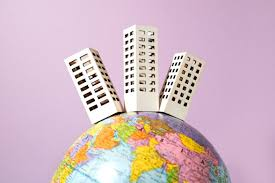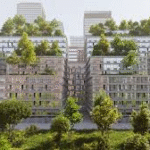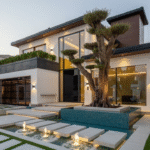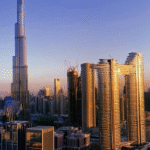Now Reading: Future-Proofing Real Estate Investments: Sustainability and Tax Efficiency in the UAE by 2025
-
01
Future-Proofing Real Estate Investments: Sustainability and Tax Efficiency in the UAE by 2025
Future-Proofing Real Estate Investments: Sustainability and Tax Efficiency in the UAE by 2025
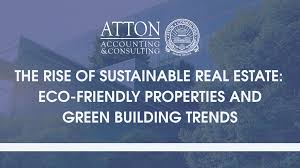
Table of Contents
The UAE’s real estate market in 2025 is a global powerhouse, driven by economic diversification, investor-friendly policies, and a strong push toward sustainability. With iconic developments like Abu Dhabi’s Al Fahid Island and Ras Al Khaimah’s (RAK) Al Marjan Island, investors are increasingly focused on future-proofing their portfolios through sustainability and tax efficiency. The UAE’s low-tax environment, combined with stringent sustainability mandates, offers unique opportunities to maximize returns while aligning with global environmental goals. This guide explores strategies for future-proofing real estate investments in the UAE, emphasizing sustainability and tax efficiency across emirates, with specific insights for Abu Dhabi, Dubai, and RAK.
Sustainability in UAE Real Estate: A Key to Future-Proofing

Sustainability is a cornerstone of the UAE’s real estate vision, aligning with national strategies like UAE Vision 2021, Abu Dhabi Economic Vision 2030, Dubai 2040 Urban Master Plan, and RAK’s 2040 Energy Efficiency Strategy. These initiatives prioritize green building standards, renewable energy, and resource conservation, making sustainable properties more attractive for long-term investment.
Key Sustainability Trends
- Mandatory Green Standards:
- Abu Dhabi: The Estidama Pearl Rating System mandates sustainable design for all new developments. Al Fahid Island, with its LEED Platinum pre-certification and Fitwel 3-Star Rating, incorporates solar panels, water recycling, and mangrove preservation, reducing operational costs by up to 20%.
- Dubai: The Al Sa’fat Green Building System requires energy-efficient materials and designs. Projects like Dubai Hills Estate integrate smart technologies and green spaces, targeting 15-25% energy savings.
- RAK: The 2040 Energy Efficiency Strategy promotes solar power and eco-friendly construction in developments like Mina Al Arab and Al Hamra Village, with incentives for green compliance.
- Implications: Sustainable properties attract eco-conscious tenants, boost rental yields (e.g., 6-10% in Abu Dhabi, 7-12% in RAK), and enhance resale value due to growing demand from younger demographics and global investors.
- Renewable Energy Integration:
- Abu Dhabi: Projects like Al Fahid Island and Masdar City leverage solar panels and smart grids, with Masdar City aiming for net-zero carbon by 2030. Al Fahid Island’s 940,000 square meters of green spaces and 11 km of coastal frontage prioritize environmental balance.
- Dubai: Developments like The Sustainable City use solar energy and recycled water, reducing utility costs by 30-40%.
- RAK: Al Marjan Island’s projects incorporate solar-powered amenities, supported by RAK’s renewable energy subsidies.
- Implications: Lower utility costs enhance ROI, particularly for commercial properties (e.g., Al Fahid Island’s retail spaces yield 5-8%).
- Incentives for Green Development:
- Abu Dhabi: Developers meeting affordable housing or sustainability quotas (e.g., Al Fahid Island’s eco-friendly infrastructure) may receive tax breaks or subsidies, indirectly benefiting investors through lower purchase prices.
- Dubai: The Dubai Green Building Regulations offer fee reductions for compliant projects, encouraging developers like Emaar to prioritize sustainability.
- RAK: Subsidies for solar installations and green certifications reduce development costs, making properties like One RAK Central more affordable.
- Implications: Incentives lower upfront costs and enhance long-term value, making sustainable investments more resilient to market fluctuations.
Investor Strategies for Sustainability
- Prioritize Certified Properties: Choose developments with high ratings (e.g., Estidama Pearl 3-5, LEED Platinum, Al Sa’fat) like Al Fahid Island or Dubai’s The Sustainable City to reduce operational costs and attract premium tenants.
- Focus on Mixed-Use Developments: Projects like Al Fahid Island (Abu Dhabi) and Al Marjan Island (RAK) combine residential, commercial, and leisure spaces, ensuring diverse revenue streams and resilience against market shifts.
- Leverage Technology: Invest in smart-home-enabled properties (e.g., One RAK Central’s smart apartments) to appeal to tech-savvy tenants and reduce energy consumption.
Tax Efficiency in UAE Real Estate
The UAE’s tax-friendly environment, with no property or capital gains taxes, is a key draw for investors. However, emirate-specific fees and federal taxes like VAT and corporate tax require strategic planning to maximize efficiency.
Federal Tax Framework (Uniform Across Emirates)
- No Property Tax:
- Details: No annual tax on residential or commercial properties, unlike global markets with 1-3% rates.
- Implications: Investors retain full rental income and sale profits, boosting ROI (5-8% in Abu Dhabi, 6-9% in Dubai, 7-12% in RAK).
- Strategy: Focus on high-yield areas like Al Marjan Island (RAK) or Al Fahid Island (Abu Dhabi) to maximize tax-free returns.
- No Capital Gains Tax:
- Details: Profits from property sales are fully retained, whether held personally or through a business.
- Implications: Encourages long-term holding in high-appreciation areas like Al Fahid Island (8-10% ROI) or Dubai’s Downtown (6-8%).
- Strategy: Hold properties for 3-5 years to capitalize on price growth, especially in off-plan projects.
- Corporate Tax (9%, Introduced June 2023):
- Details: Applies to net profits above AED 375,000 ($102,000) for business-managed properties. Personal ownership is exempt.
- Implications: Commercial properties (e.g., Al Fahid Island’s retail spaces) incur tax if leased via a licensed entity (e.g., AED 11,250 on AED 500,000 profit). Residential rentals held personally (e.g., Al Fahid Island’s villas) are tax-exempt.
- Strategy: Hold residential properties personally and structure commercial investments to minimize taxable profits (e.g., stay below AED 375,000 threshold).
- Value-Added Tax (VAT, 5%):
- Details: Applies to commercial property sales and leases; residential leases are exempt, except for serviced apartments.
- Implications: Tenants cover VAT on commercial leases (e.g., AED 10,000 on AED 200,000 rent), but landlords must remit it. Residential properties like Al Fahid Island’s apartments avoid VAT.
- Strategy: Ensure VAT compliance by registering with the FTA if taxable supplies exceed AED 375,000 annually, and factor VAT into commercial lease pricing.
Emirate-Specific Fees and Taxes
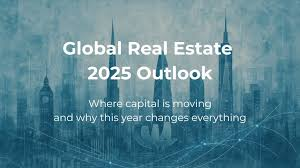
- Abu Dhabi:
- Transfer Fees: 1-2% of sale value (e.g., AED 50,000-100,000 on AED 5 million property).
- Registration Fees: AED 250 (title deeds).
- White Land Tax: 1-4% on vacant commercial/investment land, pending implementation (e.g., AED 10,000-40,000 per AED 1 million).
- Municipal Service Fees: 5% of rental value (e.g., AED 10,000 on AED 200,000 rent).
- Unique Risk: White land tax could impact investors holding undeveloped plots near Al Fahid Island.
- Strategy: Develop or lease vacant land to avoid potential tax; budget for transfer and service fees in ROI calculations.
- Dubai:
- Transfer Fees: 4% of sale value (e.g., AED 200,000 on AED 5 million property), plus AED 5,000 registration fee for properties above AED 500,000.
- Service Fees: AED 10-20 per square foot in premium areas (e.g., Dubai Hills Estate).
- Unique Feature: Higher transfer fees increase upfront costs compared to Abu Dhabi/RAK.
- Strategy: Negotiate off-plan payment plans to spread transfer fee costs; prioritize high-liquidity areas to offset fees.
- Ras Al Khaimah (RAK):
- Transfer Fees: 1-2% of sale value (e.g., AED 12,000-24,000 on AED 1.2 million studio).
- Registration Fees: AED 200-500.
- Service Fees: AED 5-10 per square foot, lower than Dubai/Abu Dhabi.
- Unique Advantage: No white land tax, unlike Abu Dhabi, making it ideal for land investors.
- Strategy: Invest in affordable properties like Al Marjan Island for high yields (7-12%) with minimal fees.
- Sharjah, Ajman, Umm Al Quwain, Fujairah:
- Transfer Fees: 1-2% (Sharjah: 1% buyer, 1% seller; others: 1-2% total).
- Registration Fees: AED 200-1,000.
- Service Fees: AED 3-8 per square foot, lowest in smaller emirates.
- Unique Feature: Affordable properties (e.g., AED 500,000 in Ajman) with 6-9% yields, but limited freehold zones.
- Strategy: Target budget-friendly investments in Sharjah/Ajman for cost efficiency, but expect lower liquidity.
Future-Proofing Strategies for Investors

- Invest in Sustainable Developments:
- Why: Green-certified properties (e.g., Al Fahid Island’s LEED Platinum, Dubai’s Al Sa’fat, RAK’s Mina Al Arab) reduce utility costs by 15-40% and attract eco-conscious tenants, ensuring long-term demand.
- Action: Prioritize projects with Estidama Pearl, LEED, or Al Sa’fat ratings. For example, Al Fahid Island’s eco-friendly villas and retail spaces offer 8-10% ROI with lower operational costs.
- Optimize Tax Efficiency:
- Personal Ownership: Hold residential properties personally to avoid corporate tax, especially in Abu Dhabi (e.g., Al Fahid Island’s villas) and RAK (e.g., Al Marjan Island’s apartments).
- VAT Compliance: For commercial investments, register for VAT and pass costs to tenants via lease agreements, as seen in Al Fahid Island’s retail spaces or Dubai’s Business Bay.
- Monitor White Land Tax: In Abu Dhabi, develop or lease vacant plots to avoid the 1-4% tax, a risk absent in RAK and other emirates.
- Diversify Across Emirates:
- Abu Dhabi: Invest in luxury developments like Al Fahid Island for stability and Golden Visa eligibility (AED 2 million+), ideal for HNWIs.
- Dubai: Target high-liquidity areas like Downtown for 6-9% yields, despite higher transfer fees.
- RAK: Focus on affordable, high-yield properties (7-12%) like Al Marjan Island, driven by tourism (Wynn Resort, 2027).
- Sharjah/Ajman: Consider for budget investments with 6-9% yields, but prioritize freehold zones like Aljada.
- Action: Balance investments across emirates to hedge against market fluctuations and optimize cost-yield ratios.
- Leverage Off-Plan Investments:
- Why: Off-plan properties, like Al Fahid Island’s Al Marsa Villas (Abu Dhabi) or One RAK Central (RAK), offer 15-20% price appreciation and flexible payment plans, spreading transfer fee costs.
- Action: Engage reputable developers (e.g., Aldar in Abu Dhabi, Emaar in Dubai) and verify escrow protections, especially in Dubai via RERA.
- Embrace Digital Tools:
- Why: Digital platforms like Abu Dhabi’s ADREC Rental Index, Dubai’s DLD blockchain systems, and RAK’s VR tours enhance transparency and reduce transaction costs.
- Action: Use ADREC or RERA platforms to validate pricing and explore properties remotely, especially for international buyers targeting Al Fahid Island or Al Marjan Island.
- Secure Golden Visa Benefits:
- Why: A AED 2 million+ investment grants a 10-year residency visa, enhancing long-term commitment and market stability.
- Action: Invest in high-value properties like Al Fahid Island’s Signature Collection (Abu Dhabi) or more affordable options in RAK’s Al Marjan Island to qualify.
Comparison Across Emirates
- Abu Dhabi (Al Fahid Island):
- Sustainability: Leads with Estidama and LEED Platinum (e.g., Al Fahid Island), reducing costs and boosting appeal.
- Tax Efficiency: No property/capital gains tax, but white land tax risk; 5-8% commercial, 6-10% residential yields.
- Best For: HNWIs seeking luxury and stability.
- Dubai:
- Sustainability: Al Sa’fat ensures green compliance, with projects like The Sustainable City cutting costs by 30-40%.
- Tax Efficiency: Higher 4% transfer fees offset by high liquidity; 6-9% yields.
- Best For: Investors prioritizing mature markets and global appeal.
- RAK (Al Marjan Island):
- Sustainability: 2040 Energy Efficiency Strategy supports green projects, less stringent than Abu Dhabi/Dubai.
- Tax Efficiency: No white land tax, low 1-2% transfer fees, 7-12% yields.
- Best For: Budget-conscious investors seeking high returns.
- Sharjah, Ajman, Umm Al Quwain, Fujairah:
- Sustainability: Emerging green initiatives, less advanced than Abu Dhabi/Dubai.
- Tax Efficiency: Low 1-2% transfer fees, 6-9% yields, but limited freehold zones.
- Best For: Small-scale, cost-sensitive investors.
Conclusion
Future-proofing real estate investments in the UAE by 2025 requires a dual focus on sustainability and tax efficiency. Sustainable developments like Abu Dhabi’s Al Fahid Island, Dubai’s The Sustainable City, and RAK’s Al Marjan Island reduce costs and attract premium tenants, ensuring long-term value. The UAE’s tax-free environment, with no property or capital gains taxes, maximizes ROI, though emirate-specific fees (e.g., Dubai’s 4% transfer fees, Abu Dhabi’s white land tax risk) demand strategic planning. By investing in green-certified properties, optimizing ownership structures, and diversifying across emirates, investors can build resilient portfolios in the UAE’s dynamic real estate market.
READ MORE: The Role of Foreign Investment in Shaping UAE’s Real Estate Markets in 2025
WATCH MORE: https://www.youtube.com/watch?v=Gu1qO1PTRtY



